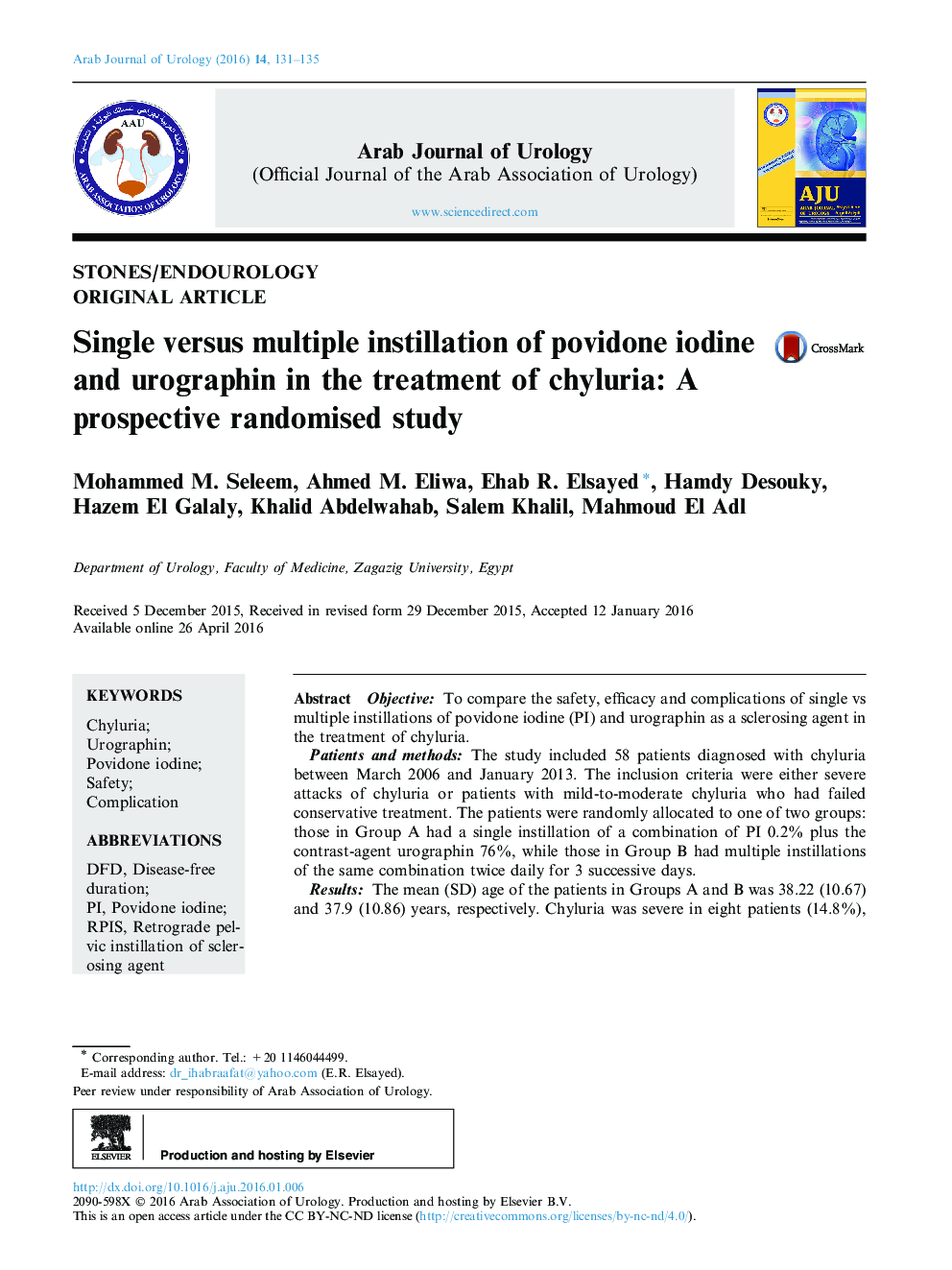| Article ID | Journal | Published Year | Pages | File Type |
|---|---|---|---|---|
| 4267919 | Arab Journal of Urology | 2016 | 5 Pages |
ObjectiveTo compare the safety, efficacy and complications of single vs multiple instillations of povidone iodine (PI) and urographin as a sclerosing agent in the treatment of chyluria.Patients and methodsThe study included 58 patients diagnosed with chyluria between March 2006 and January 2013. The inclusion criteria were either severe attacks of chyluria or patients with mild-to-moderate chyluria who had failed conservative treatment. The patients were randomly allocated to one of two groups: those in Group A had a single instillation of a combination of PI 0.2% plus the contrast-agent urographin 76%, while those in Group B had multiple instillations of the same combination twice daily for 3 successive days.ResultsThe mean (SD) age of the patients in Groups A and B was 38.22 (10.67) and 37.9 (10.86) years, respectively. Chyluria was severe in eight patients (14.8%), moderate in 25 (46.3%) and mild in 21 (38.9%). The success rate in Group A (single instillation) was 85.2% and in Group B (multiple instillation) was 88.9%. The recurrence rate in Group A was 14.8% with a disease-free duration (DFD) of 4–15 weeks, while in group B it was 11.1% with a DFD of 6–18 weeks.ConclusionThere was no significant difference between a single instillation of a combination of PI 0.2% and urographin 76% as a sclerosing agent in the treatment of chyluria and multiple instillations. However, the single instillation protocol is more cost effective with a shorter hospital stay.
